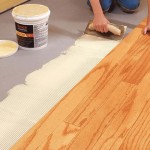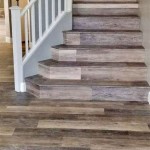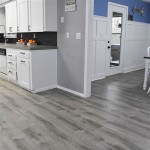Understanding White Oak Hardwood Flooring Grades
White oak hardwood flooring is a popular choice for homeowners and builders alike, valued for its durability, versatility, and aesthetic appeal. However, not all white oak flooring is created equal. Understanding the grading system applied to hardwood is crucial for selecting the right product to meet specific design needs and budget constraints. Grades are determined by the natural characteristics present in the wood, such as knots, color variations, mineral streaks, and grain patterns. These characteristics are not defects but rather inherent features that contribute to the unique beauty and character of natural wood.
Grading rules are not standardized across the industry. Different associations, such as the National Oak Flooring Manufacturers Association (NOFMA) and the National Wood Flooring Association (NWFA), provide guidelines, but manufacturers often adapt them or create their own proprietary grading systems. This lack of standardization can make navigating the grading landscape somewhat confusing. Therefore, it is essential to understand the principles behind grading and carefully examine samples or descriptions from the specific manufacturer. The grading system is designed to categorize the wood based on the number and size of these natural variations. The higher the grade, generally, the fewer the imperfections and the more uniform the appearance.
The following sections will explore the commonly encountered white oak hardwood flooring grades, highlighting their key characteristics and typical applications.
Understanding Common White Oak Flooring Grades
While specific terms and definitions may vary between manufacturers, several common grade categories are widely recognized in the white oak flooring market. These include Select & Better, #1 Common, and #2 Common (also sometimes referred to as Rustic Grade or Cabin Grade). Each grade offers a distinct aesthetic and price point, catering to diverse preferences and design styles.
Select & Better Grade: This grade represents the highest quality of white oak flooring. It is characterized by a minimal number of imperfections and a generally uniform appearance. Select & Better grade planks typically exhibit consistent color with fewer knots, mineral streaks, and other natural markings. This grade is often chosen for its clean, refined look, particularly in modern and contemporary designs. The planks are generally longer and straighter, contributing to a smoother, more consistent installation. Due to its superior quality and lower presence of natural defects, Select & Better grade flooring generally commands a higher price point than other grades.
The minimal character markings in Select & Better grade provide a clean and consistent canvas for various finishes, allowing the natural beauty of the white oak grain to shine through. This grade is suitable for applications where a formal or sophisticated aesthetic is desired, such as living rooms, dining rooms, and master bedrooms. Its consistency also makes it a practical choice for larger installations where uniformity is preferred.
#1 Common Grade: This grade offers a balance between quality and character. #1 Common grade white oak flooring will exhibit more natural variations than Select & Better. Knots are more frequent and can be slightly larger, and mineral streaks and color variations are more prominent. Despite these characteristics, #1 Common grade retains considerable structural integrity and offers a unique visual appeal. This grade is often favored for its natural, slightly rustic charm, making it a versatile choice for a variety of design styles.
The increased character markings in #1 Common grade add visual interest and depth to the flooring. This grade is well-suited for spaces where a warmer, more inviting atmosphere is desired, such as family rooms, kitchens, and entryways. The variations in color and grain pattern can also help to conceal everyday wear and tear, making it a practical choice for high-traffic areas. The price point for #1 Common grade flooring is typically lower than that of Select & Better, offering a more budget-friendly option without sacrificing the durability and beauty of white oak.
#2 Common Grade (Rustic or Cabin Grade): This grade represents the most character-rich option in white oak flooring. #2 Common grade flooring features a significant number of knots, mineral streaks, and color variations. Knots may be larger and more frequent than in #1 Common, and open knots (knots that have fallen out) may be present. This grade often includes planks with shorter lengths and more pronounced imperfections. The overall aesthetic is rustic and informal, ideal for creating a warm, inviting, and lived-in atmosphere.
The abundant character markings in #2 Common grade flooring make it a popular choice for those seeking a truly unique and natural look. This grade is often specified for cabins, farmhouses, and other rustic settings where imperfections are embraced as part of the overall design aesthetic. The price point for #2 Common grade flooring is generally the lowest of the three grades, making it an affordable option for those seeking a character-rich flooring solution. While requiring more attention during installation due to the presence of open knots and shorter lengths, the resulting floor offers a distinctive and visually appealing surface.
Factors Influencing Grade Classification
Several specific characteristics are evaluated when assigning a grade to white oak hardwood flooring. These factors include the size, number, and type of knots; the presence and extent of mineral streaks; the amount of color variation; the overall grain pattern; and the presence of any manufacturing defects. Each of these factors contributes to the overall appearance and perceived quality of the flooring.
Knots: Knots are a natural occurrence in wood, representing the point where a branch grew from the trunk of the tree. Their size, number, and type significantly impact the grade of the flooring. Smaller, tight knots (knots that are firmly embedded in the wood) are generally acceptable in higher grades, while larger, loose, or open knots are more common in lower grades. Open knots may require filling during installation to create a smooth and durable surface.
Mineral Streaks: Mineral streaks are caused by minerals absorbed by the tree from the soil. These streaks appear as dark lines or streaks running along the grain of the wood. The amount and prominence of mineral streaks vary depending on the grade of the flooring. Higher grades typically have fewer and less noticeable mineral streaks, while lower grades may exhibit more pronounced streaks that contribute to the wood's character.
Color Variation: White oak naturally exhibits variations in color, ranging from light creamy hues to darker shades of brown. The degree of color variation accepted depends on the grade of the flooring. Select & Better grade typically features the most consistent color, while #1 and #2 Common grades allow for a wider range of color variations, contributing to a more natural and less uniform appearance.
Grain Pattern: The grain pattern of white oak can also influence the grade of the flooring. Straight, consistent grain patterns are generally preferred in higher grades, while more varied and irregular grain patterns are more common in lower grades. The grain pattern contributes to the overall visual texture and character of the flooring.
Manufacturing Defects: While natural characteristics are the primary basis for grading, manufacturing defects can also affect the grade of the flooring. These defects may include warping, cupping, bowing, or other imperfections that can compromise the structural integrity or appearance of the flooring. Flooring with significant manufacturing defects is typically relegated to lower grades or rejected altogether.
Choosing the Right Grade for Your Project
Selecting the appropriate grade of white oak hardwood flooring involves carefully considering several factors, including the desired aesthetic, budget constraints, and the intended use of the space. Each grade offers a unique combination of beauty, character, and price, making it essential to weigh the pros and cons of each option before making a decision.
Aesthetic Considerations: The desired aesthetic is a primary driver in selecting the right grade. For a clean, modern, and uniform look, Select & Better grade is often the preferred choice. For a more natural, rustic, and character-rich appearance, #1 or #2 Common grade may be more suitable. Consider the overall design style of the space and choose a grade that complements the existing décor and architectural features.
Budget Constraints: Budget is another important factor to consider. Select & Better grade flooring is typically the most expensive, while #2 Common grade is the most affordable. #1 Common grade offers a balance between quality and price. Determine your budget and explore the available options within that range. Remember to factor in the cost of installation and finishing when making your final decision.
Intended Use of the Space: The intended use of the space can also influence the choice of grade. For high-traffic areas, such as entryways and hallways, a more durable and forgiving grade like #1 or #2 Common may be preferable. The variations in color and grain pattern in these grades can help to conceal everyday wear and tear. For less frequently used spaces, such as master bedrooms or formal dining rooms, Select & Better grade may be a suitable choice.
Sample Inspection: One of the most important steps in choosing the right grade of white oak flooring is to carefully inspect samples. Obtain samples from different manufacturers and compare them side-by-side. Examine the samples for the presence of knots, mineral streaks, color variations, and other characteristics. Consider how these features will look in the space and how they will complement the overall design aesthetic. Pay attention to the milling quality and consistency of the samples. Request to see larger samples or even a small mock-up of the flooring to get a better sense of the final appearance.
Manufacturer Variations: Remember that grading rules are not standardized across the industry, so definitions can vary between manufacturers. Be sure to understand the specific grading system used by the manufacturer and carefully examine their product descriptions and samples. Don't hesitate to ask questions and seek clarification from the manufacturer or retailer about the characteristics and quality of their flooring products. Understanding the specific grading system used by the manufacturer is crucial for ensuring that you are getting the flooring that meets your expectations.
By carefully considering these factors and taking the time to inspect samples, you can confidently choose the right grade of white oak hardwood flooring for your project, creating a beautiful and durable surface that will enhance the value and enjoyment of your home for years to come.

Grading Scale For Hardwood Flooring Floor Depot

Flooring 101 Understanding Wood Grades Carlisle Wide Plank Floors

White Oak Grades For Staining Doityourself Com Community Forums

White Oak 2 Common Grade Unfinished Solid Hardwood Flooring Floor Depot

Comparison Of White Oak Select And 1 Common Grades Hardwood Floors Types Wood Flooring

White Oak Character Grade Unfinished Solid Hardwood Flooring 2 10 Random Lengths Floor Depot

Hardwood Flooring Grades 101 4 Oak Natural Explained Reallyfloors America S Est

White Oak Natural Smooth 1 Common 3 4 X 2 9 84

9 X 3 4 White Oak Character Live Sawn European Style 5 To 12 Unfinished Solid Hurst Hardwoods

9 X 3 4 White Oak Character Live Sawn European Style 5 To 12 Unfinished Solid Wood Flooring
Related Posts








